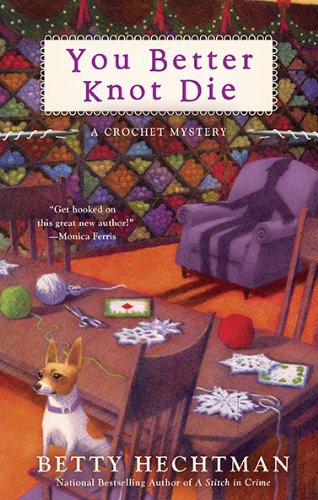So I am not sure why I so strongly detest puns in the titles of mystery novels. Here are some examples of the many such books now available:
 Naughty in Nice
Naughty in NiceQuilt or Innocence
Book, Line and Sinker

Fowl Prey
The Real Macaw
Hearse and Buggy
Death of a Rug Lord
Deader Homes & Gardens
Let It Sew
Suture Self
Hiss and Hers
Grape Expectations
Last Wool and Testament
Bell, Book and Scandal
Read and Buried
Murder for the Halibut
And Then You Dye
 Bone Appetit
Bone AppetitReel Murder
Tiles and Tribulations
Pies and Prejudice
Roast Mortem
Reap What You Sew
Hell Hath No Curry
As the World Churns
You Better Knot Die

Deviled Eggs
Sew Deadly
Threaded for Trouble
Splendor in the Glass
Fleece Navidad
Dyer Consequences
Books Can Be Deceiving
Immaculate Reception
The Wurst Is Yet to Come
Hiss of Death
I have not read any of these mysteries. They may be better than their titles, but I don't intend to find out. Why do I dislike these titles so?
It may have a lot to do with the fact that there are so many of them. I also avoid novels with titles like "So-and-so's Daughter," simply because they are so numerous. These titles may at first appear to be clever and original, but after awhile they all sound alike. One gets the impression that some of these writers start by trying to come up with a good pun, then build their story around it. Just as people who pun all the time can quickly become tiresome, so puns in book titles can quickly become a bore.
I have no objection to comic mysteries, but a pun in the title just seems a little too flippant to me. These are stories about murder, after all. Somebody dies. If the detective is a bumbler or if the investigation leads to some funny situations, I'm all for it. But a pun in the title reflects on the whole situation, including death itself.
The best, most respected mystery authors rarely, if ever, resort to puns. I'm talking about people like Donna Leon, Laura Lippman, Arnald Indridason, Loren D. Estelman, Joan Hess and Edna Buchanan. Intelligent people can up with some good puns, but intelligent people should also know when to avoid them.









